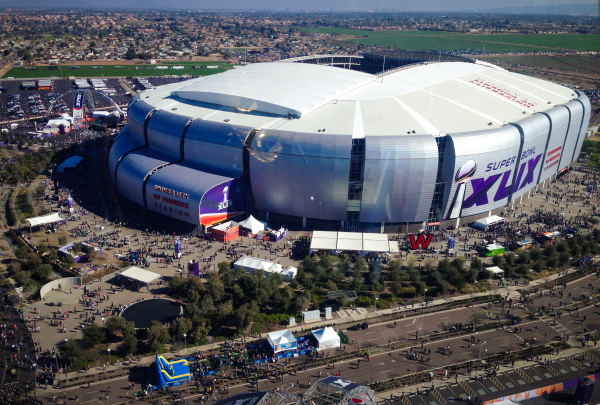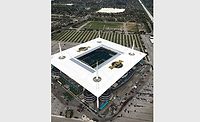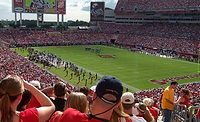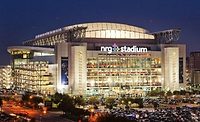5 Things About State Farm Stadium You Should Know Before Super Bowl LVII

The State Farm Stadium. Photo: www.glendaleaz.com.
It's not your typical oasis, but State Farm Stadium – home of Super Bowl LVII this Sunday, Feb. 12, 2023 – stands out amidst its desert surroundings in metropolitan Phoenix.
Its innovative features distinguish it from other structures in just about any setting. As football fans – casual or otherwise – will learn via pre-game hype, the 17-year-old stadium is still one of a handful in the league to have a retractable roof; State Farm Stadium was the first of just two stadiums boasting a fully-retractable field.
That engineering feat warranted a closer look from RC – which featured the project on the cover of the June 2006 issue, and that review didn't disappoint. Here are five things we learned and wanted to share in preparation for Sunday's big game.
Been Here Before
The 63,000-seat stadium can add about 10,000 people to reach maximum capacity and is no stranger to big games and large crowds. Since opening as Cardinals Stadium in 2006, the facility has hosted the annual Fiesta Bowl, the 2017 NCAA Final Four, multiple national college football championship games, and Super Bowls XLII in 2008 and XLIX in 2015.
Still Stands Out
As mentioned, the stadium's engineering allows both the field and the roof to retract or unfold to take advantage of (or refuge from) Arizona's unyielding sunshine. The stadium is 280 feet tall at its peak with a roof cladding of fully adhered TPO from GAF, installed by Phoenix-based Progressive Roofing, covering a staggering 366,000 square feet. The roof system took eight months to finish and used a large chunk of the stadium's overall $455 million construction budget. That's due mainly to the two roof panels covered with translucent Birdair fabric sitting above massive arcing rails, allowing it to retract and close.
 The State Farm Stadium during the 2015 Super Bowl. Photo: www.glendaleaz.com
The State Farm Stadium during the 2015 Super Bowl. Photo: www.glendaleaz.com
Open or Shut?
At the time of publication, organizers expect natural light courtesy of open skies for this Sunday's big game, but that rests entirely on the weather. The roof was closed during the 2008 contest – a 17-14 victory by the New York Giants over the New England Patriots – due to rain. In 2015, the roof was open as clear skies prevailed and temperatures hovered in the 60s when the Patriots beat the Seattle Seahawks 28-24. Sunday's forecast calls for similar conditions to 2015: mostly sunny skies with a high temperature near 70 degrees.
Take 12
Should the weather take a turn, don't expect the final football game of the season to experience a prolonged delay … exceeding 12 minutes. That's how long it takes for the roof to close, which isn't bad considering each roof panel weighs more than 1.1 million pounds. Stadium designers created a 480-horsepower motorized system to control the structure as the panels roll along.
That said, the NFL also has strict rules for closing a retractable roof once a game is underway, and that's when inclement weather is imminent, or public safety is at risk.
What you Won't See
As impressive as State Farm Stadium is for its all visible features, only roofers will appreciate an unseen but critical component: 27,500 square feet of gutters, entirely tied into the roof system.
The 4-foot-wide gutters around the stadium are virtually hidden from view by a liquid membrane system carefully applied around penetrations and pipes that curl up over the roofline. The Progressive crews used full-tapered expanded polystyrene (EPS) insulation to create the proper drainage slope. DensDeck was applied before adding a TPO membrane, cloaking the entire gutter system.
Looking for a reprint of this article?
From high-res PDFs to custom plaques, order your copy today!






